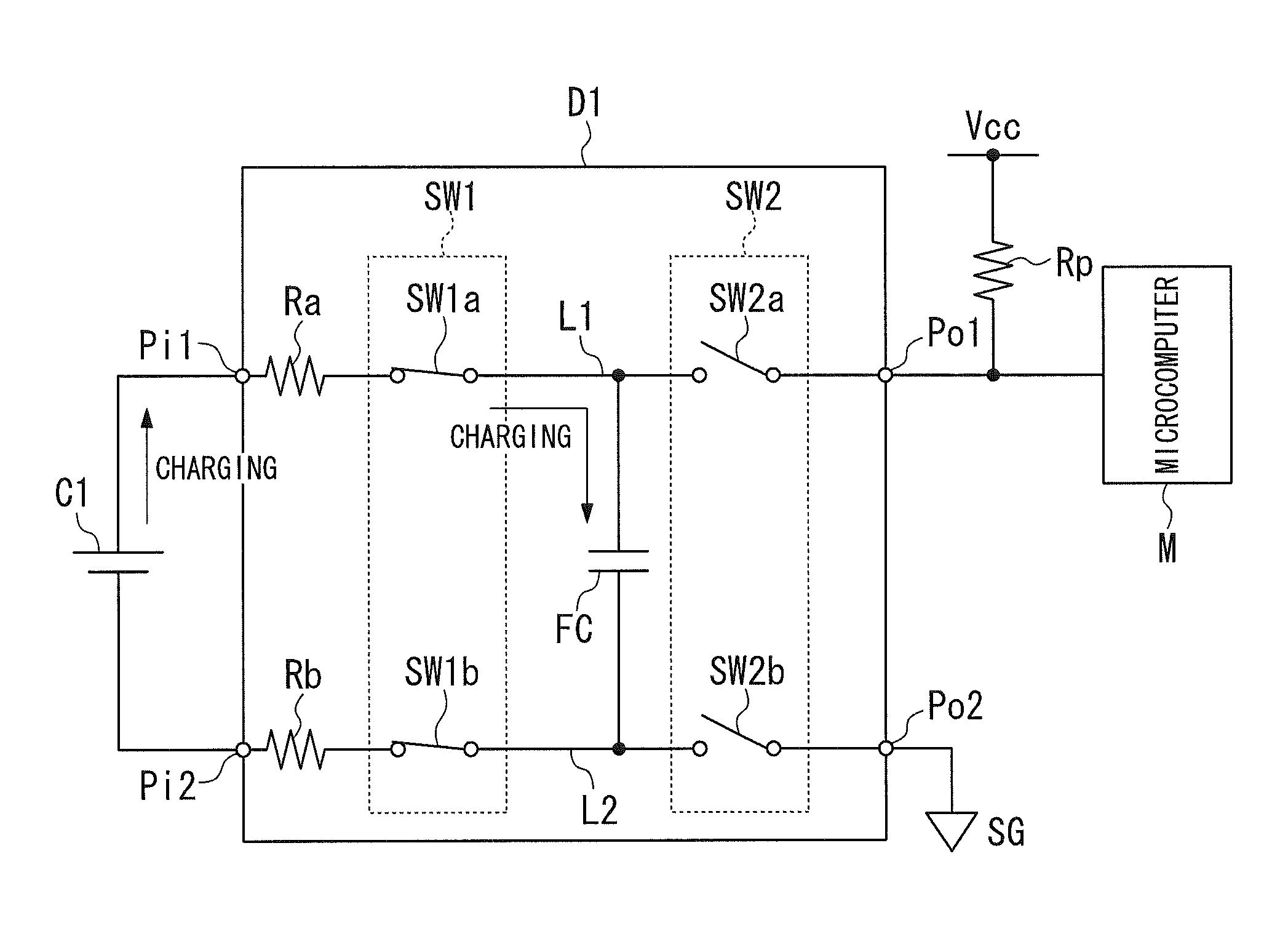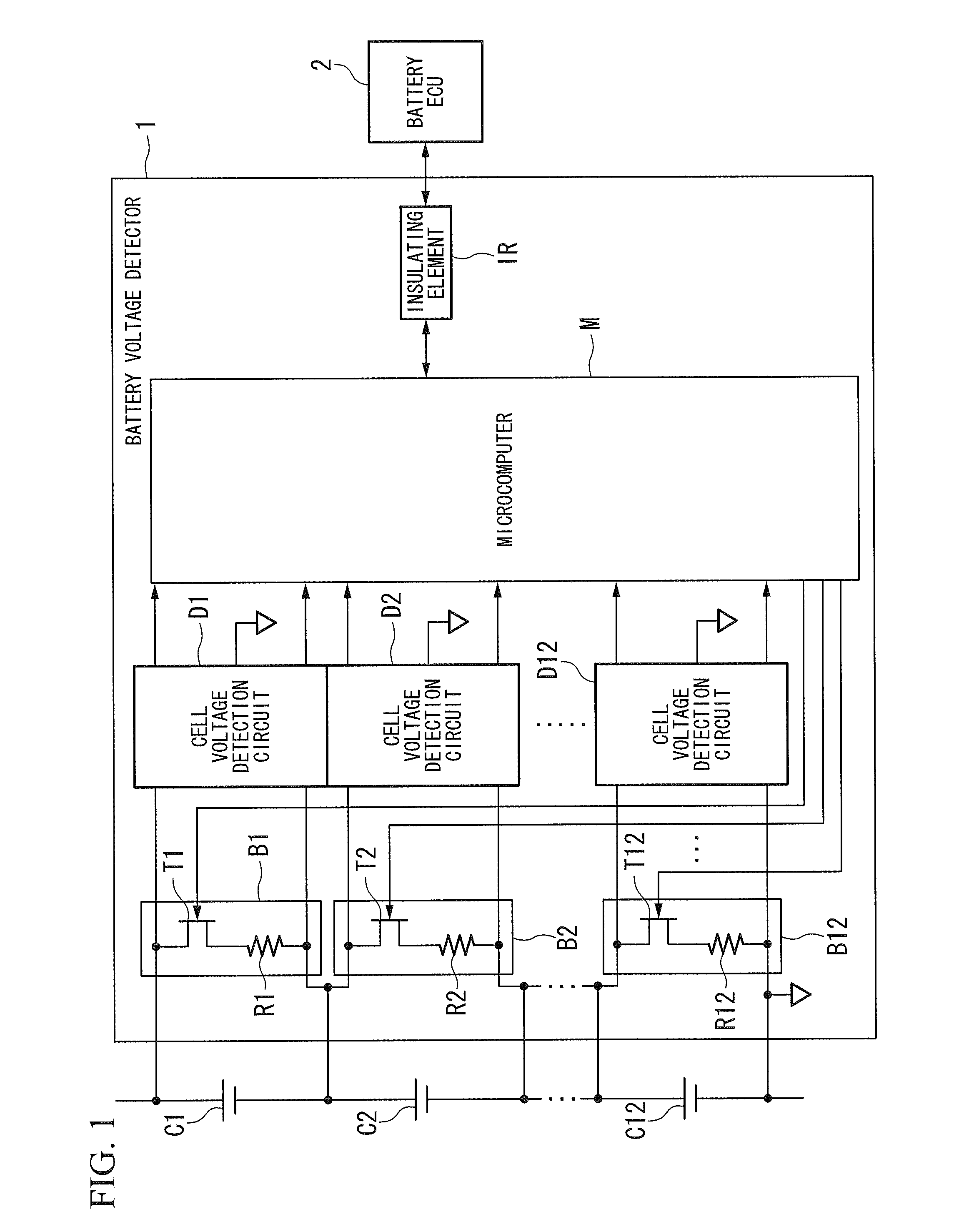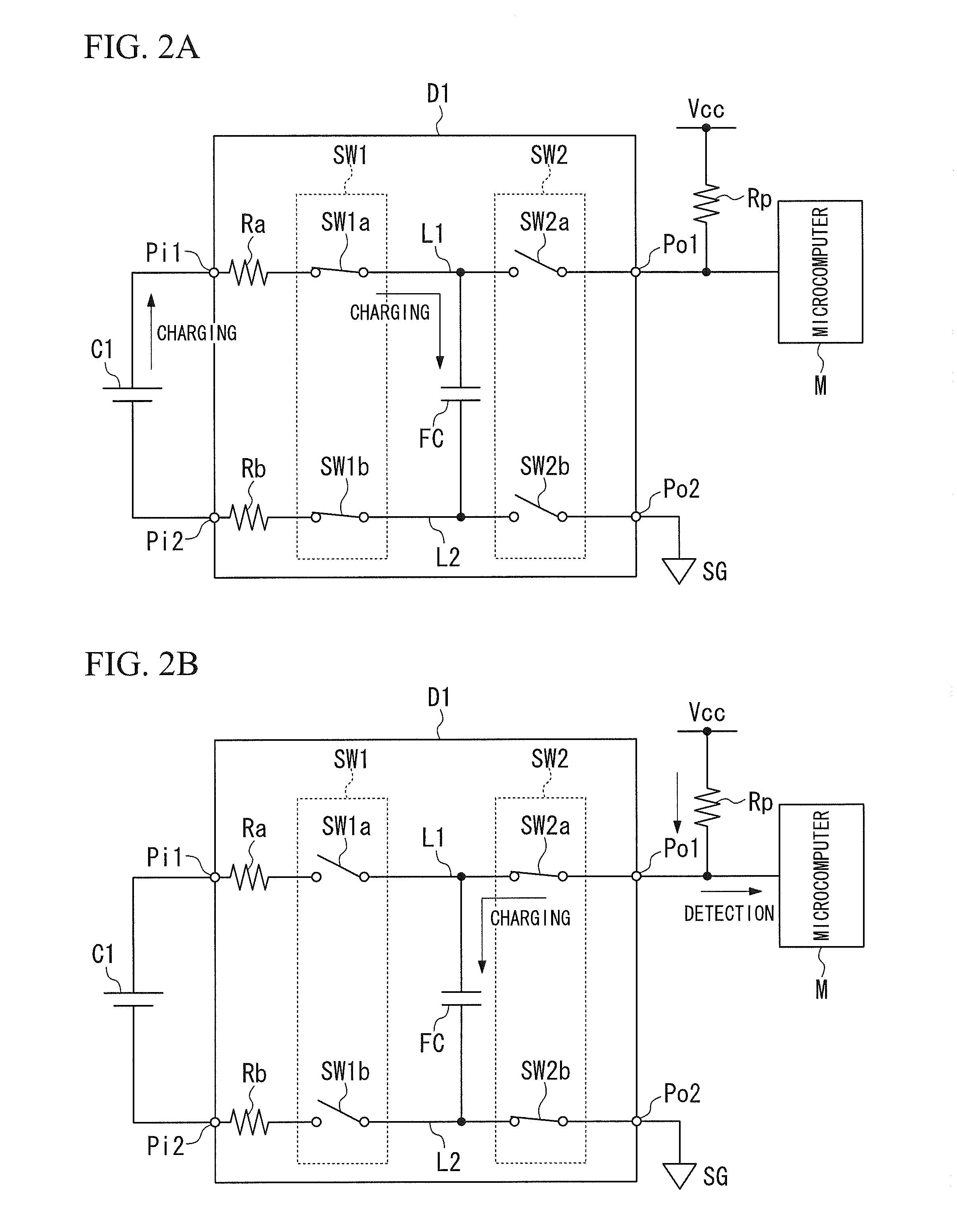Battery voltage detector having pull-up resistor
a pull-up resistor and detector technology, applied in the field of battery voltage detectors, can solve the problems of reducing the precision of cell balance control in some cases
- Summary
- Abstract
- Description
- Claims
- Application Information
AI Technical Summary
Benefits of technology
Problems solved by technology
Method used
Image
Examples
Embodiment Construction
[0016]The present invention will now be described herein with reference to illustrative embodiments. The accompanying drawings explain a battery voltage detector. The size, the thickness, and the like of each illustrated portion might be different from those of each portion of an actual battery voltage detector.
[0017]Those skilled in the art will recognize that many alternative embodiments can be accomplished using the teachings of the present invention and that the present invention is not limited to the embodiments illustrated herein for explanatory purposes.
[0018]Hereinafter, an embodiment of the present invention is explained with reference to the drawings.
[0019]FIG. 1 schematically illustrates a battery voltage detector 1 according to the present embodiment. As shown in FIG. 1, the battery voltage detector 1 is an ECU (Electronic Control Unit) that detects cell voltages of twelve battery cells C1 to C12 included in a battery and performs voltage balance control on the battery c...
PUM
 Login to View More
Login to View More Abstract
Description
Claims
Application Information
 Login to View More
Login to View More - R&D
- Intellectual Property
- Life Sciences
- Materials
- Tech Scout
- Unparalleled Data Quality
- Higher Quality Content
- 60% Fewer Hallucinations
Browse by: Latest US Patents, China's latest patents, Technical Efficacy Thesaurus, Application Domain, Technology Topic, Popular Technical Reports.
© 2025 PatSnap. All rights reserved.Legal|Privacy policy|Modern Slavery Act Transparency Statement|Sitemap|About US| Contact US: help@patsnap.com



